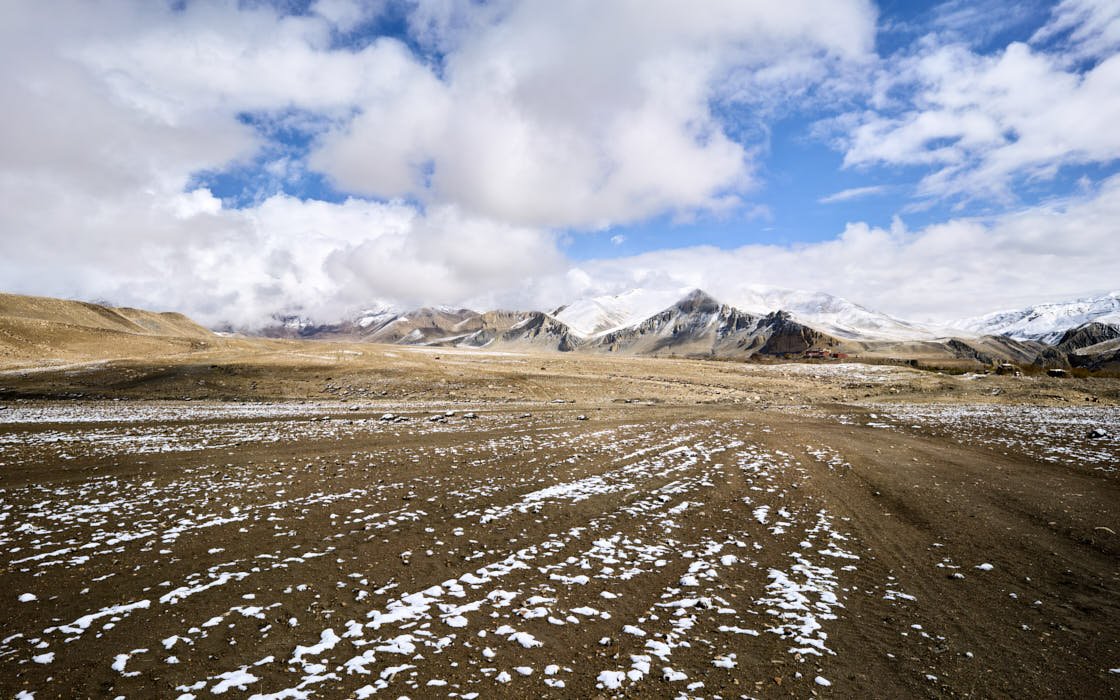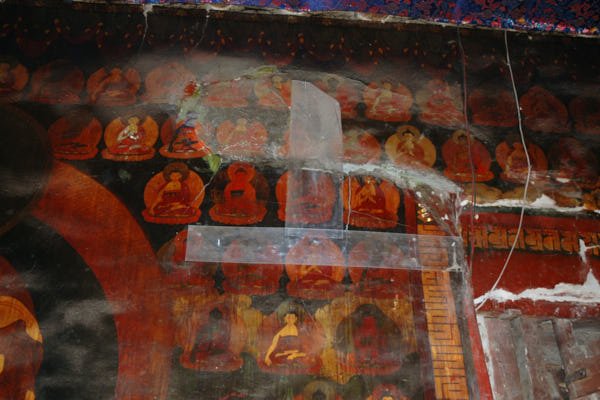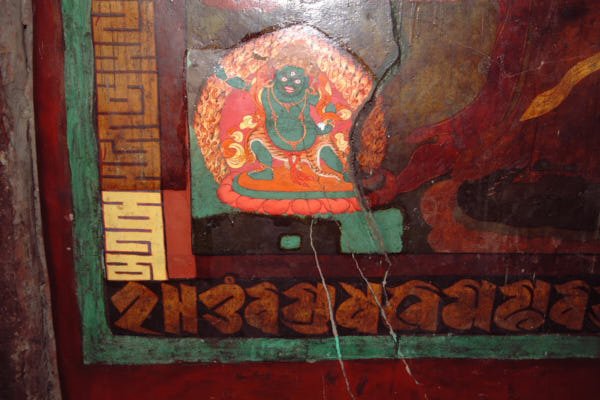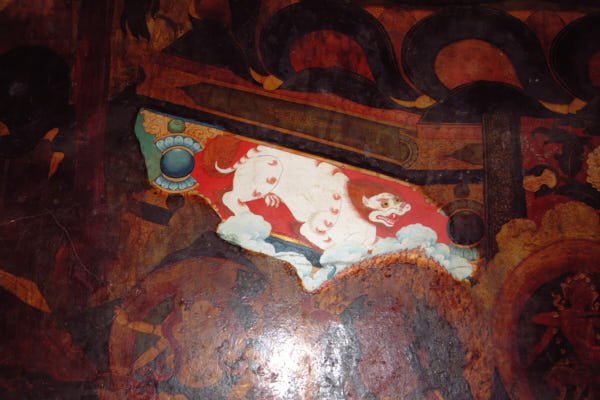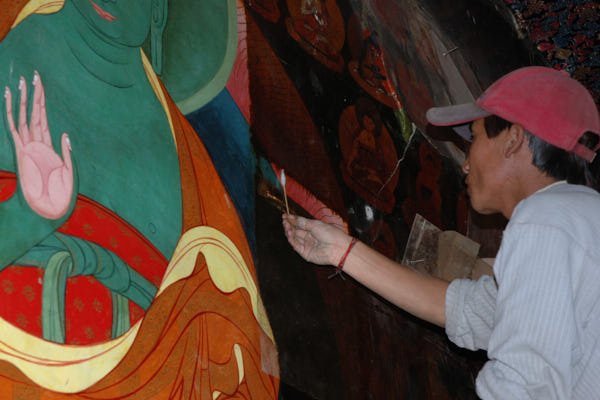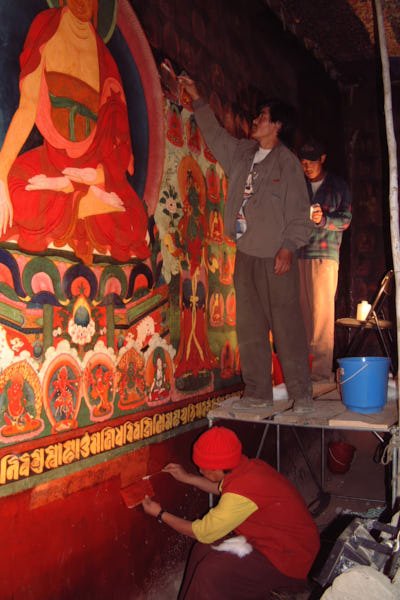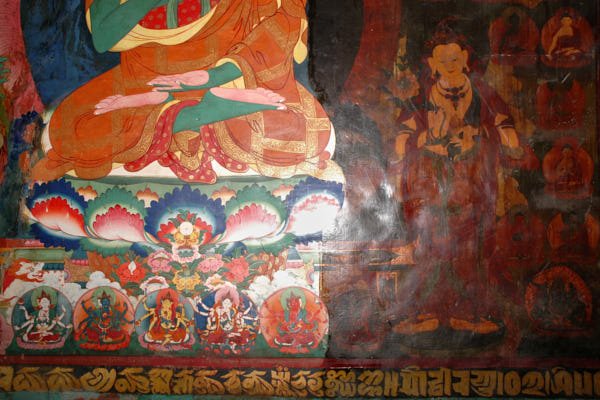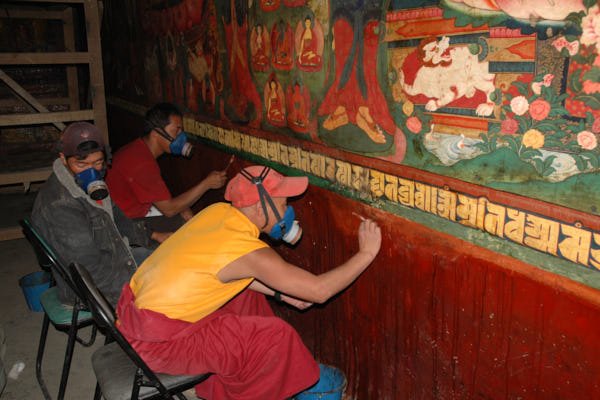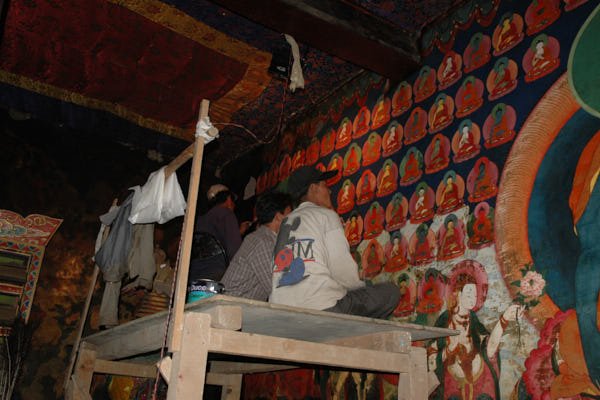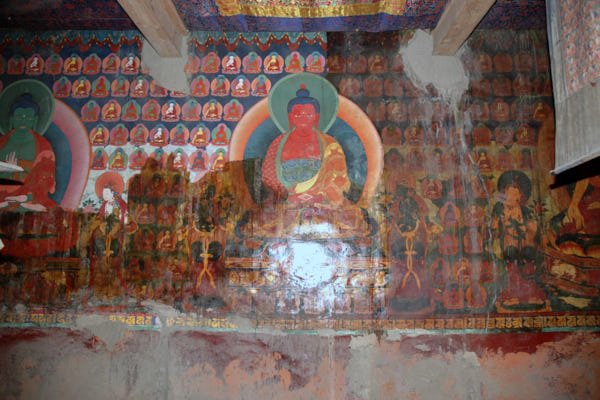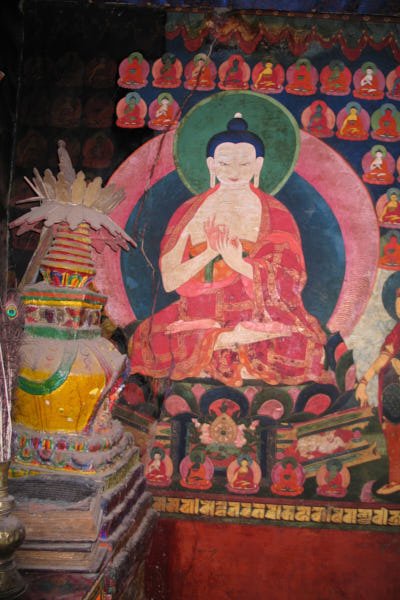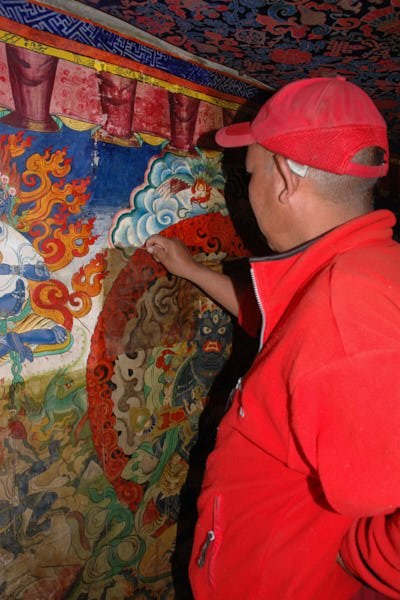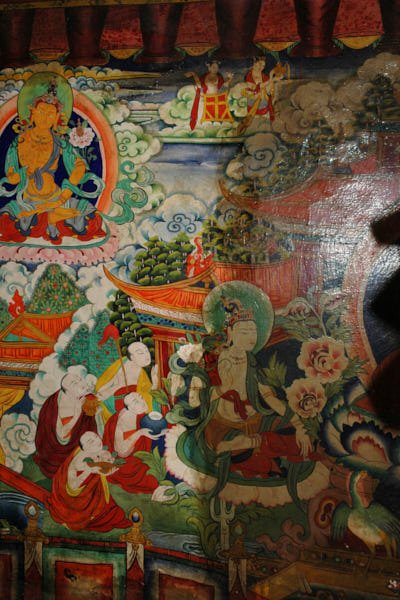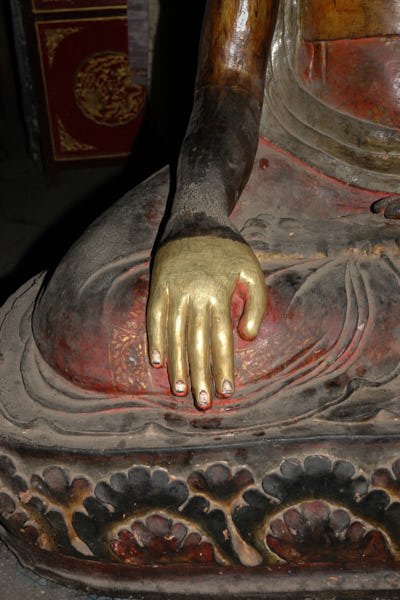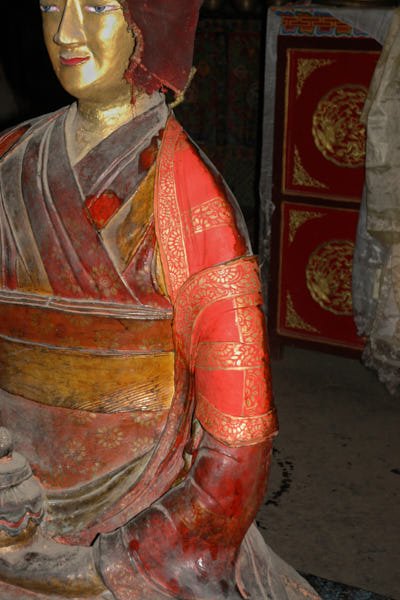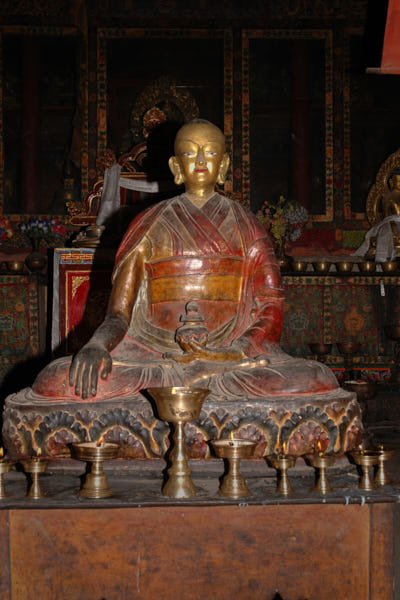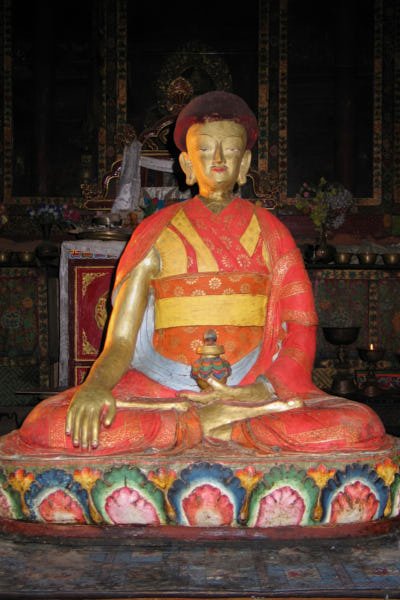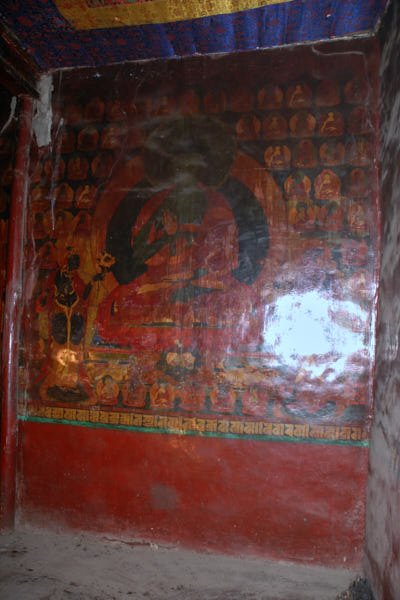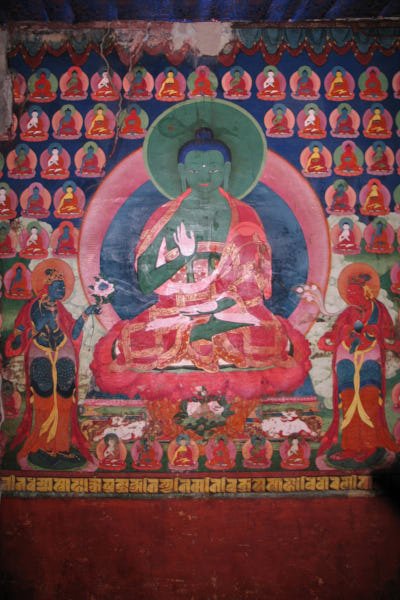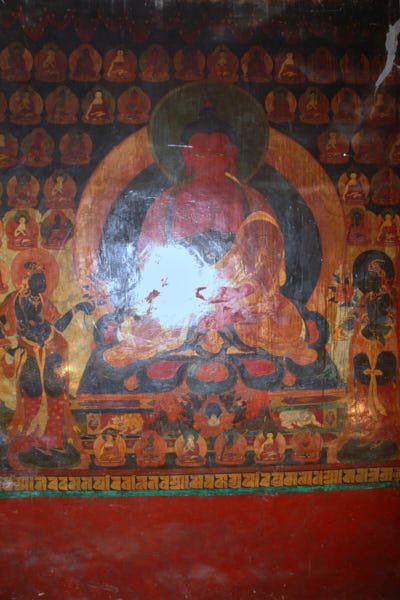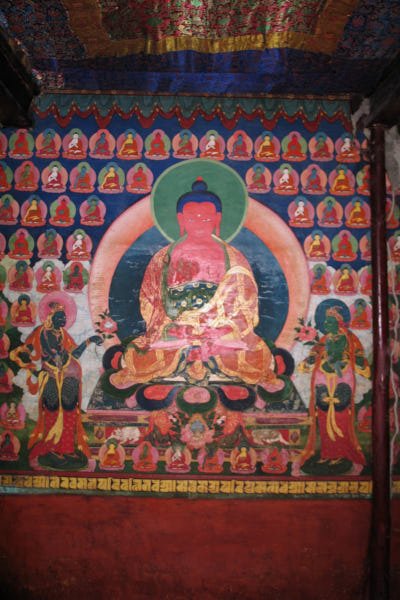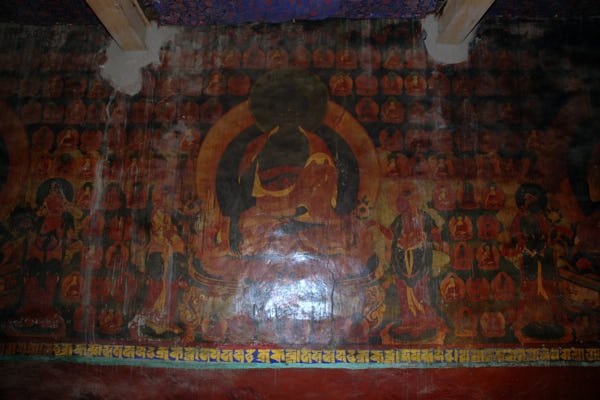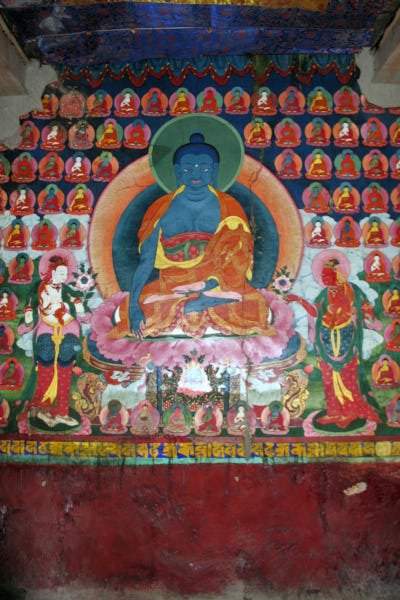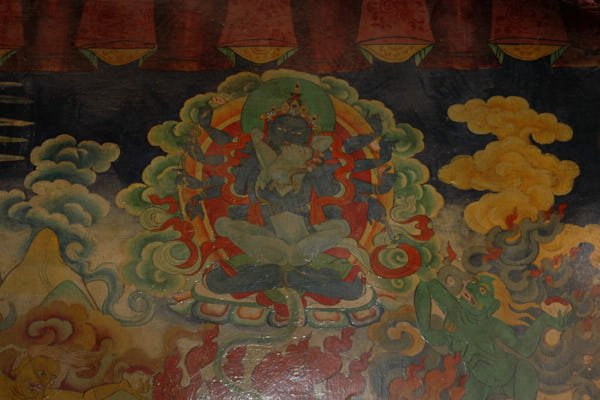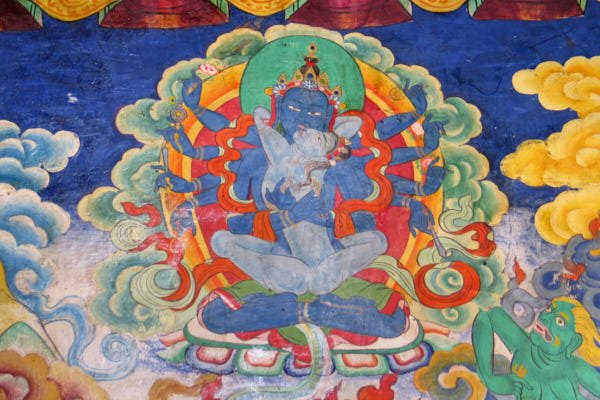This monastery is located in the village of Tsarang and even though it is considered a very old monastery the wall paintings in the main assembly hall are relatively recent. The work in this monastery started in 2002 when a portion of the east wall was consolidated and cleaned. In 2003 the conservation work on the east wall was completed and then in 2004 the south and north wall undertook the same treatment. Six trainees from the Wall Painting Conservation Team working in Tubchen Gonpa were sent to Tsarang to restore the murals together with three local monks who also received training in the major operations of consolidation and cleaning.
thupten gonpa

the paintings
The conservation work was limited to the consolidation work and the cleaning of the wall painting on the south, east and on north wall of the main assembly hall: the west wall couldn’t be treated because of a huge bookshelf covering the whole length of the murals, not allowing any restoration intervention to be carried out. The project involved the conservation of the wall paintings present on the skylight as well. Due to serious structural problems, our work started only after the structural repair was completed.The fixing of the paint layer was followed by the consolidation of the preparatory layers and cracks. Then the wall paintings were cleaned and no pictorial integration was carried out.
The consolidation: task consisted mainly in the re-adhesion of the separated preparatory layers from the wall. A hand drill was used to hole the detached areas so as to inject a mortar made of local clays mixed with a PVA binder solution. Flaking of paint layer was present randomly all over the wall paintings and it was fixed back by first carefully spreading a surfactant solution by paintbrush. Then an acrylic solution was injected under the paint layer scales either by syringe of by soft pointed paintbrushes. Japanese tissue paper was subsequently applied on the area to be treated and the paint layer flakes were pressed back in position through the use of slightly wet cotton swabs.
Big cracks were recently plastered by the locals with a rough plaster overlapping and covering the paint layer in an attempt to safeguard the murals. These plasters were carefully removed with surgical knives and fiberglass pencils and then the cracks were properly cleaned with the aid of an air compressor. A plaster under the level of the paint layer was applied to seal the cracks thus allowing the injection of a mortar consisting of local clay mixed with a PVA binder solution.
A dangerous case of detachment of wall paintings on the north side of the east wall was treated differently. The area was propped using flexible polycarbonate sheets fixed into the wall with long drill bits to prevent the large fragment of wall paintings from falling. Thereafter, the area was thoroughly cleaned through a breach using a vacuum cleaner attached to very thin pipes so as to remove any debris present underneath the paint layer. Then a mortar made of clays mixed with a PVA binder solution was injected by pipe. Since the weight of the injected mortar could have caused the wall painting fragment to collapse the mortar was poured in small amounts and left dry each time until the gap was filled up and the fragment secured again to the wall.
The cleaning: wall paintings were covered by a thick layer of a brownish varnish that was removed through the use of organic chemicals. Japanese tissue paper soaked in organic chemicals was applied on the surface to be cleaned for a prolonged period of time and let the glue swell and dissolve. The area to be cleaned had to be kept wet with the same chemical until the tissue paper was removed and the aged varnish cleaned off with cotton swabs soaked in the same chemical. After the varnished was removed an old intervention of restoration appeared in some areas of the east and the north wall: portions of the lost paintings had been painted again to complete the original pictorial cycle. Furthermore, damaged parts of the paintings had been overpainted using colors with a water-based binder on the south and north wall: thus these overpaintings were removed simply with cotton swabs soaked in water.
the statues
During the conservative work on the wall paintings there was enough time to undertake the cleaning of a statue representing un unidentified lama, as a cleaning example for the following years, in case more funds would have been allocated to work also in the conservation of all statues present in the monastery. The clay based statue was wholly covered by a thick coat of grease and soot. The face seemed to be over-painted. In the lower side heavy deposits of mouse-dung coated the hands and the feet, which were removed with compresses of cotton soaked in weak solutions of acetic acid. Thereafter the soot and the aged varnish was removed through cotton compresses soaked in organic chemicals applied for prolonged time to allow a proper dissolution of the coating, which was then removed with cotton swabs soaked in the same chemical.
the end
The conservation work focused only on the consolidation and the cleaning of the wall paintings and did not comprise the pictorial intervention. It ended in 2004 as scheduled and the team moved from Tsarang to Logekhar to work in a similar conservation project in Ghar Gonpa.
